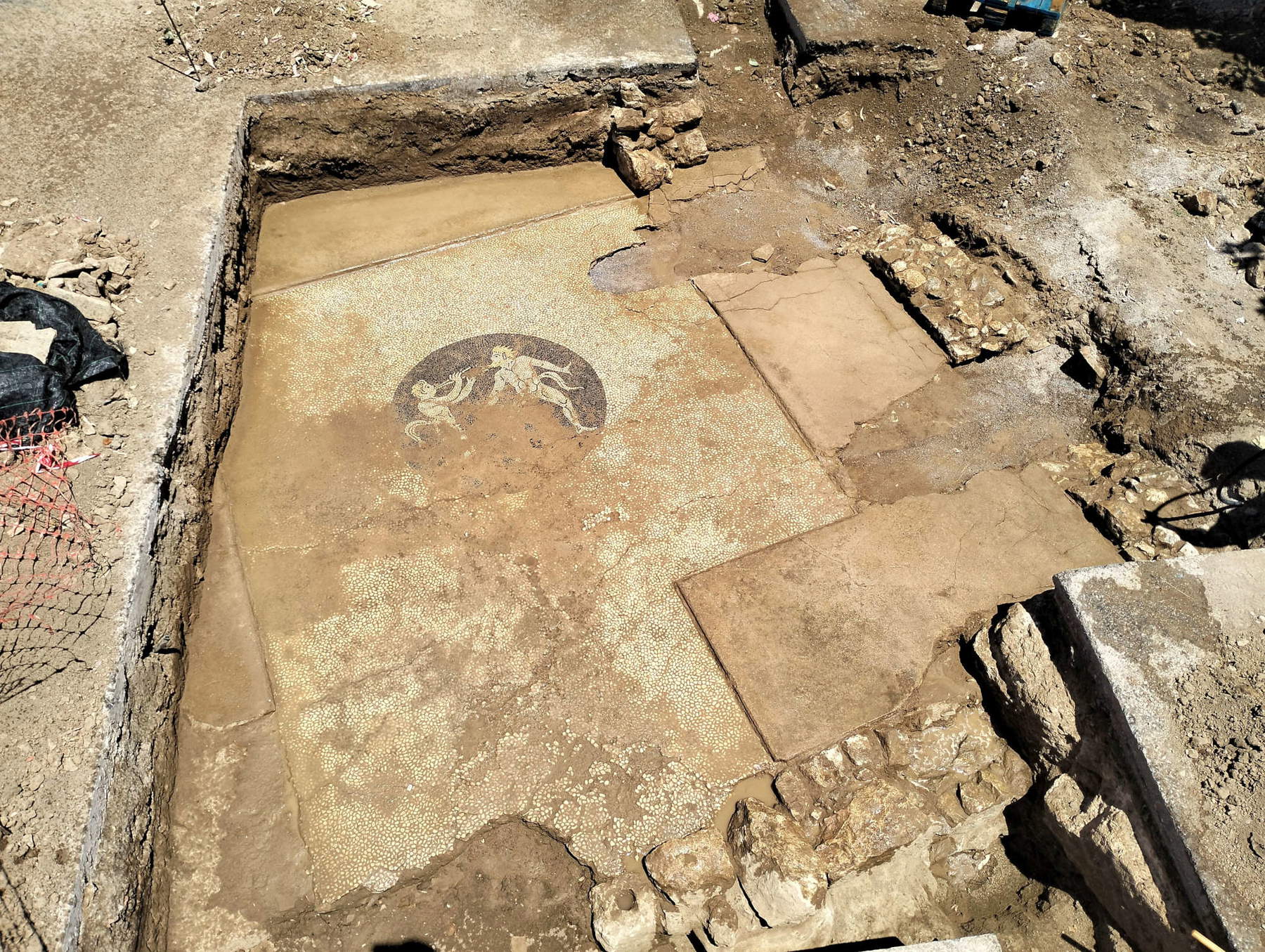Important archaeological discovery in Greece, in Eretria, a town of twelve thousand inhabitants on the island of Euboea. In fact, during installation work on a new water supply pipe, the portion of a house from the late classical period (mid-4th century B.C.) was identified, which preserves a pebble mosaic floor with a depiction of two satyrs in the center. The building in question is located in the core of the urban fabric of the ancient city, in the vicinity of the sanctuary of Apollo Dafniforos, the “Quarter of the Panathenaic Amphorae” and the “House of the Mosaics,” where dwellings from the 4th century have been found, decorated in many cases with elaborate pebble mosaic floors.
During the excavation a nearly square room emerged with internal dimensions of 3.50 meters by 3.55 meters bordered on the south and east by masonry. On the other sides (north and west) it was not possible to bring to light the walls of the room, due to the limited extent of the excavation and the existence of the municipal road surface.
Inside the room, the mosaic floor made of natural pebbles, small in size and white in color, was investigated, preserving a central medallion, 1.13 meters in diameter, depicting satyrs. These are two male figures with animalistic features (tail, horns, pointed ears). One is young and plays a double flute, while the other is bearded, older, and probably dances to the rhythm of the music. Pebbles of various colors (white, black, red, yellow) were used to render facial features or details of the body: very special is the rendering of the hair with yellow pebbles, which lends realism and vitality to the image.
The mosaic with the merry satyrs enjoying themselves to the sound of music is also semantically connected with the use of the space, which was intended for the celebrations that took place in the house: the depiction leads to the identification of this room as the space reserved for men, where meetings and banquets were held. After its abandonment, in the early Christian centuries (5th - 6th centuries CE), the site was used as a cemetery, as can be deduced from the identification of five graves.
Following the completion of research and the first assessment of the archaeological data, the house and the mosaic pebble floor probably date to the mid-4th century BCE, a time when luxurious private houses appearing in ancient Eretria followed the well-known architectural typology with a central peristyle courtyard, around which the private areas of the family and the public areas designated for official occasions and banquets developed. Similar cobblestone floors of the “House of Mosaics” have been dated around 360-350 BCE.
Greek archaeologists decided to temporarily cover the floor for protection reasons and to modify the passage of the water pipe so that the site would not be affected in any way and could be highlighted in the future.


 |
| Greece, mosaic with two satyrs discovered |
Warning: the translation into English of the original Italian article was created using automatic tools. We undertake to review all articles, but we do not guarantee the total absence of inaccuracies in the translation due to the program. You can find the original by clicking on the ITA button. If you find any mistake,please contact us.